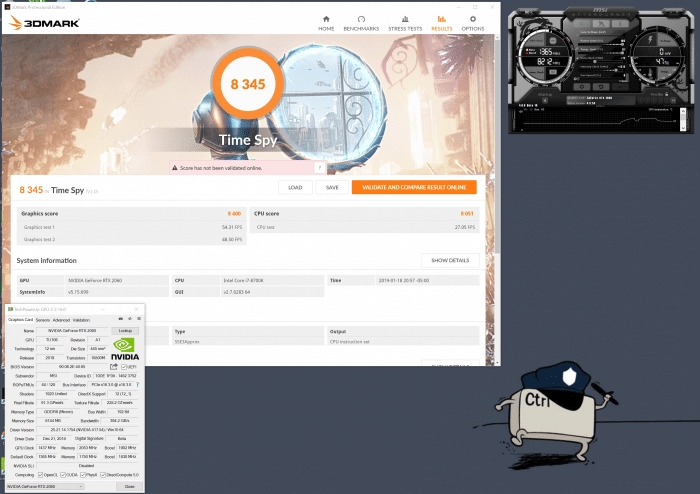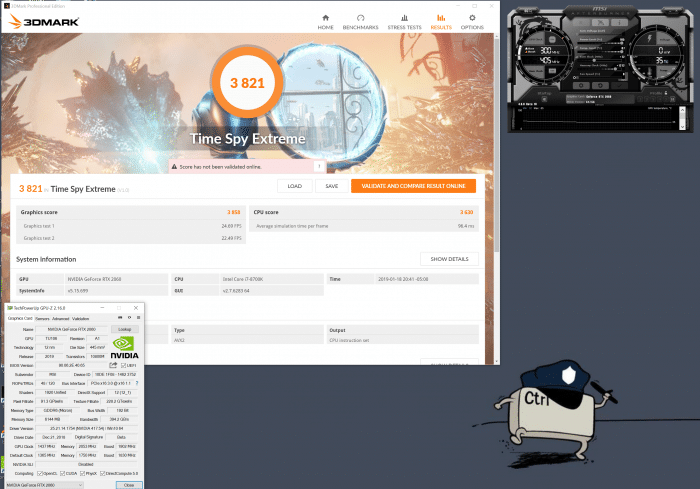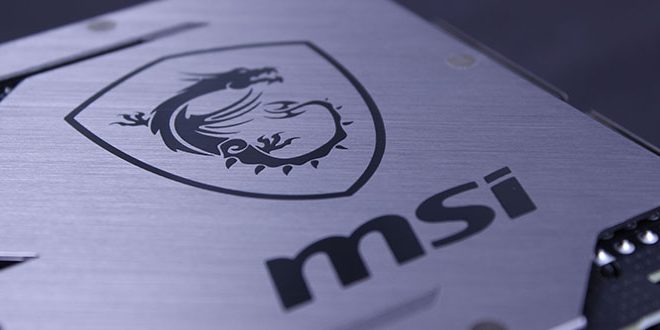Overclocking
Overclocking the GTX 2000 Series cards are very similar to 10 series but there have been some improvements in how the boost works in version 4 over version 3 which was on Pascal. We discussed this earlier in the features section.
The MSI RTX 2060 Gaming Z was interesting since I did not want to mess with fan settings and I wanted to test it like any user may who would just jump in Afterburner to explore.
Pushing the GPU I was able to get 100% stable +72 GPU which when reaching steady state hit 2055MHz (stock: 1980MHz boost steady state) that is not huge at a paltry 4% increase.
The memory I was able to achieve +1212 fully stable which translates to 8151 or 16,424MHz effective. (Stock: 7000MHz – 14000MHz Effective) an approximate 15% overclock. This was quite impressive as it fell right into a strap or area where the memory increase could eek out just a little more performance.

Time Spy showed a graphics score increase of a little under 7% with the overclock.

Time Spy Extreme showed a graphics score increase of a little over 7% with the overclock.
So, while the GPU on the MSI RTX 2060 Gaming Z might not have a ton of headroom as it comes pre-overclocked out of the box. The Gaming Z definitely has a lot of room to play in the memory. the overclock we achieved not only pulled an extra 7% over its own stock performance but it beat out our FE model overclocked runs by a small but decent margin as well.
 Bjorn3D.com Bjorn3d.com – Satisfying Your Daily Tech Cravings Since 1996
Bjorn3D.com Bjorn3d.com – Satisfying Your Daily Tech Cravings Since 1996









